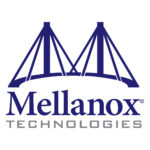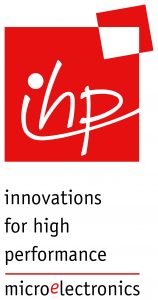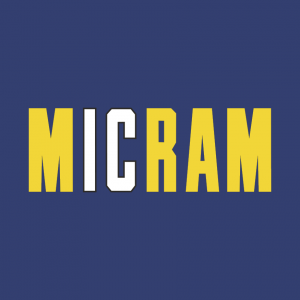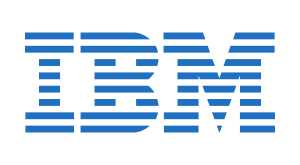Welcome to WordPress. This is your first post. Edit or delete it, then start writing!
Posted onAuthorraphaelg@mellanox.comLeave a comment
Welcome to WordPress. This is your first post. Edit or delete it, then start writing!
 Mellanox Technologies, an indirect wholly owned subsidiary of NVIDIA, is a supplier of end-to-end InfiniBand and Ethernet interconnect solutions and services for servers and storage. Mellanox offers a broad portfolio of interconnect products: adapters, switches, software, cables and silicon for a range of markets including computing, enterprise Data centers, Web 2.0, Cloud, Storage and financial services. Mellanox’ top notch equipment is preferred among HPC cluster managers: Mellanox connects 59% of TOP500 systems (296 systems) including all of the 126 InfiniBand systems, and most of the 25 gigabit and faster Ethernet platforms. Mellanox accelerates 4 of the TOP5 supercomputers and six of the top ten.
Mellanox Technologies, an indirect wholly owned subsidiary of NVIDIA, is a supplier of end-to-end InfiniBand and Ethernet interconnect solutions and services for servers and storage. Mellanox offers a broad portfolio of interconnect products: adapters, switches, software, cables and silicon for a range of markets including computing, enterprise Data centers, Web 2.0, Cloud, Storage and financial services. Mellanox’ top notch equipment is preferred among HPC cluster managers: Mellanox connects 59% of TOP500 systems (296 systems) including all of the 126 InfiniBand systems, and most of the 25 gigabit and faster Ethernet platforms. Mellanox accelerates 4 of the TOP5 supercomputers and six of the top ten.
Mellanox offers End-to-End High-Speed Ethernet and InfiniBand Interconnect Solutions including network interface cards (NICs), switches, data processing units (DPUs) as well as the associated software. Mellanox has a breadth of research activities in the fields of High-Performance Computing, Artificial Intelligence, storage, Network Function Virtualization, advanced network acceleration technologies (RDMA, DPDK), switch programmability, Big Data, virtualization and cloud. Mellanox has a broad portfolio of optical interconnect products including multi-mode and single-mode solutions for various deployment scenarios in different datacenter tiers. The company is strongly involved in photonics research and development aiming at promising transceiver technologies towards multi-terabit interconnects.
As of 27 April 2020, Mellanox Technologies is part of Nvidia. NVIDIA pioneers accelerated computing to tackle challenges ordinary computers cannot. NVIDIA‘s invention of the GPU in 1999 sparked the growth of the PC gaming market, redefined modern computer graphics and revolutionized parallel computing. More recently, GPU deep learning ignited modern AI — the next era of computing — with the GPU acting as the brain of computers, robots and self-driving cars that can perceive and understand the world. The combination of NVIDIA’s leading computing expertise with Mellanox’s high-performance networking technology enables higher performance, greater utilization of computing resources and lower operating costs.
 ETH Zurich, Switzerland, is a top ranking international university in the fields of technology and natural science. ETH has more than 19,000 students from whom 4000 are doctoral students. ETH has more than 500 professors engaged in teaching and research. Till today, 21 Nobel laureates are linked with ETH. The Institute of Electromagnetic Fields (IEF) at ETH is headed by Prof. Leuthold. It is involved in research and development of optical communication devices and systems. Areas of interest include silicon photonics, plasmonics and novel modulation formats, beam forming and pulse shaping as well as Tbit/s transmission systems. The IEF Institute is further known for the expertise high-speed integrated optics and high-speed transmission.
ETH Zurich, Switzerland, is a top ranking international university in the fields of technology and natural science. ETH has more than 19,000 students from whom 4000 are doctoral students. ETH has more than 500 professors engaged in teaching and research. Till today, 21 Nobel laureates are linked with ETH. The Institute of Electromagnetic Fields (IEF) at ETH is headed by Prof. Leuthold. It is involved in research and development of optical communication devices and systems. Areas of interest include silicon photonics, plasmonics and novel modulation formats, beam forming and pulse shaping as well as Tbit/s transmission systems. The IEF Institute is further known for the expertise high-speed integrated optics and high-speed transmission.

The IHP is a member of the Leibniz Association. It is registered as a non-profit making organization. 300 employees are working at the institute. The IHP pursues interdisciplinary application-oriented research in the fields of high performance microelectronics and communication, particularly Materials Research, Technology Research, Circuit Design and System Design. The department of technology at IHP is focusing on the development of technologies extending the functionality and performance of a qualified 0.25/0.13μm CMOS baseline technology. The department uses a 1000 square-meter, class-1 clean room and pilot line with production-grade tool-set for 0.25 and 0.13 μm technologies. CMOS and SiGe BiCMOS technologies for Multi Project Wafer service and low-volume prototyping are also offered to external customers, which allows for research as close as possible to a real fabrication facility. In recent years, the focus has been on pushing SiGe:C bipolar to the limits in terms of speed, achieving the fastest switching speed in any existing silicon technology. A modular extension of the existing BiCMOS technology is a Si photonic module providing waveguide technology and integrated silicon photonics devices. At IHP, BiCMOS and silicon photonics are monolithically integrated under the umbrella of a single, planar 200mm Si process, IHP’s 0.25µm photonic BiCMOS technology. Therefore, IHP will act as foundry partner supporting project partners with photonic BiCMOS products. The main focus of activities will be in the area of wafer-level die testing of monolithic optoelectronic systems on chip consisting of high-speed analog driving electronics and silicon photonics devices.
 Micram Microelectronic GmbH is a privately owned fabless whole-service provider for high performance ASIC solutions. The company was founded 1989 as a spin-off of the Center of Microelectronics of the Ruhr-University Bochum (RUB), Germany. The range of services is tailored to deliver turnkey solutions for high performance ASICS in SiGe- and III-V-bipolar as well as in RF-CMOS technologies focusing on power-saving, high-speed, high-accuracy, and highly-functional applications. Micram’s engineers participated in various R&D projects related to high-speed data transmission (Photonik II, KomNet, MultiTeraNet, 100GET, NGOA, IMPACT). Amongst other record results, the company was the first that successfully developed 40, 80 and 100 Gbit/s SiGe transceivers and TIAs as well D-A and A-D converters with bandwidth and sampling rates in excess of 40 GHz and 100 GS7s. Micram employees count 17 design engineers, including 4 PhD’s, supported by high-trained technicians and administration staff, working in the technical areas Design&Engineering, Rapid Prototyping, Test&Measurement. Micram’s product development cycle is supported by in-house Rapid Prototyping and Test&Measurement services, installed in a 2000 sqft clean room facility.
Micram Microelectronic GmbH is a privately owned fabless whole-service provider for high performance ASIC solutions. The company was founded 1989 as a spin-off of the Center of Microelectronics of the Ruhr-University Bochum (RUB), Germany. The range of services is tailored to deliver turnkey solutions for high performance ASICS in SiGe- and III-V-bipolar as well as in RF-CMOS technologies focusing on power-saving, high-speed, high-accuracy, and highly-functional applications. Micram’s engineers participated in various R&D projects related to high-speed data transmission (Photonik II, KomNet, MultiTeraNet, 100GET, NGOA, IMPACT). Amongst other record results, the company was the first that successfully developed 40, 80 and 100 Gbit/s SiGe transceivers and TIAs as well D-A and A-D converters with bandwidth and sampling rates in excess of 40 GHz and 100 GS7s. Micram employees count 17 design engineers, including 4 PhD’s, supported by high-trained technicians and administration staff, working in the technical areas Design&Engineering, Rapid Prototyping, Test&Measurement. Micram’s product development cycle is supported by in-house Rapid Prototyping and Test&Measurement services, installed in a 2000 sqft clean room facility.

IBM Research GmbH, with approximately 300 employees, is a wholly-owned subsidiary of the IBM Research division with headquarters at the T.J.Watson Research Centre in Yorktown Heights, NY, USA. Established in 1956, it represents the European branch of IBM Research. Scientific and industrial research is conducted in three scientific and technical departments, in particular in the Science and Technology department. Throughout the history of this department, scientists have made major contributions to the advancement of knowledge in solid-state physics, stimulated by problems relevant to technology. Today research focuses on different areas of technological significance, including Neuromorphic technologies, Internet-Of-Things, Materials innovation, Life Science and Nanoscale physics. The newly opened Binnig and Rohrer Nanotechnology Centre supports this effort , offering state of the art micro fabrication yet with the required flexibility for any research at the frontier between industrial and academic research. IBM is involved in many joint projects with universities throughout Europe, in research programs established by the European Union and the Swiss government, and in co-operation agreements with research institutes – in particular ETHZ – or industrial partners. The Neuromorphic Device and Systems (NDS) team focuses its efforts on the development of new native technologies for cognitive computing, bringing together new materials and novel integration schemes. The team involved has a strong background in the field of material science and characterization, as well as a unique experience gathered in the development of heterogeneous integration concepts for non-standard materials with CMOS technology. Within the plaCMOS project, the team will closely collaborate with the ETHZ and IHP to further develop ferroelectric materials, devices and integration concepts pioneered at IBM Research GmbH.

Research activities of the Department of Electronics and Circuits are focused on the exploration of the feasibility limits of high-speed circuits in conjunction with the underlying semiconductor technology as well as pushing these limits further by developing novel circuit concepts and circuit technologies. In conjunction with circuit design and optimisation techniques, the research activities also include the die assembly with electrical, mechanical and thermal interfacing aspects as well as measurement techniques for characterisation and modelling at such high data rates. The targeted record data rates in plaCMOS can only be reached if the optimum circuit performance can be obtained and the integration of the photonic devices and the interfacing is aligned accordingly.

The Aristotle University of Thessaloniki (AUTH) is the largest university in Greece, established in 1925. Today the main campus extends over an area of 429 metric acres in the heart of the city and comprises 12 Faculties organized in a total number of 42 Schools that cover the full range of scientific disciplines. More than 70.000 undergraduate and 8.000 postgraduate students are working towards their degrees at the Aristotle University, while more than 2.200 Faculty members are employed as Teaching and Research personnel.
PhosNET research group was formed in 2008 within the Department of Informatics, Aristotle University of Thessaloniki (AUTH) now also member of the Center for Interdisciplinary Research and Innovation (CIRI) of AUTH. The main research activities of PhoNET extend along a broad area in the field of photonic technologies with the main focus being on simulations and experiments of novel optical interconnect components and systems, network-on-chip, οptical RAM architectures and optical-wireless networks. It is a fully equipped laboratory with a range of high-speed test and measurement systems for the characterization of passive and active photonic devices at chip- or package- level at bit rates up to 50 Gbps. Despite being very recently established, PhosNET has already participated in several FP7 research projects with AUTH (or in collaboration with the Center for Research and Technology Hellas) including PLATON, RAMPLAS, Mirage, PhoxTrot and COMANDER while coordinated three of them (RAMPLAS, PLATON & COMANDER – ongoing). PhoseNET has also significant involvement in HORIZON2020 already coordinating PLASMOfab and ICT-STREAMS and participating in L3MATRIX focusing in the fields of photonic and plasmonic ICs for optical interconnects in data centers and HPCs. PhosNET also participates in the national project WisePON funded by the Greek Secretary for Research and Technology.
